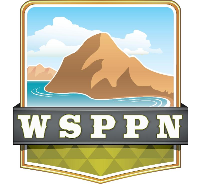|
Recorded Webinars
OCTOBER 2015
|
| Interactions Between Toxic Chemicals and Global Climate Change |
This webinar
provided
an overview of how toxic chemicals and climate change interact and what their future impact may be.
|
|
Press Kit for TAPs - How to Use the P2 Results Report to Leverage Your Program

The P2 Results report is a collaborative project of the National Pollution Prevention Roundtable (NPPR) and the Pollution Prevention Resource Exchange (P2Rx).
These results demonstrate the value of P2 in not only environmental and natural resource conservation terms, but also in economic benefits. Use this report to highlight the good things companies are doing to improve the environment. The P2Rx Centers have prepared a press kit for technical assistance providers to use to help promote their programs.
It contains:
-A press release for any local press outlet
-Suggested communication for your state environmental agency commissioner
-Suggested communication for your congressional representatives.
View the archived May 5 Webinar on the P2 results report.
|
| 
If you would like to share your P2 program news or success stories, please send your content to [email protected] to be included in an upcoming newsletter.
|
|
| |
Test your knowledge
Check out our new training modules!
P2 101
Through the training, you will learn: key definitions for P2 and how P2 fits with other greening initiatives, including energy efficiency; tools and resources for waste identification; and how to apply and prioritize P2 approaches at a business. You will also learn how to manage change; overcome barriers; conduct post-project evaluations; and put your company on a path for sustained P2 success. Click here
Green Chemistry 101
Learn the twelve principles of green chemistry taught by the American Chemical Society Green Chemistry Institute. This is a virtual training experience filmed in high definition so that you will feel like you are part of the class. Click here
|
Greening the Season
EPA Region 9
As we celebrate, decorate, give gifts and travel this holiday season, we also generate a lot of waste and increase our energy use. The volume of household waste in the United States generally increases 25 percent between Thanksgiving and New Year's Day - about 1 million extra tons.
There are many simple ways to "green" your holiday season by reducing, recycling, and reusing. You can also minimize your impacts on climate change. It takes only a small commitment to protect the environment.
Click
here
to learn more.
Winter Tips

|
|
Green Chemistry Guide Listen and Learn Webinar Series - Implementation of the Green Chemistry Change and Sustaining Success
Tuesday, January 19, 2016
11:00am - 12:00pm PST
The Green Chemistry manual provides state agencies and technical assistance providers (engineers) with tools and resources to better serve their clients who are looking for information and who need support for greening their operations, processes, products and supply chains. Business owners can also use the publication to develop and implement green chemistry solutions and improve profitability.
This series of webinars covers the content of the manual chapter-by-chapter. Chapter 8, presented by Lissa McCracken, will provide guidance on how to implement sustainability practices into business models and integrating pollution prevention and green chemistry strategies and models.
Register for the webinar here
|
|
Renewable Natural Gas: Repurposing Waste to Fuel Vehicles
(Source: Clean Cities Technical Response Service Team -
US Department of Energy)
What is renewable natural gas and how can it be used to fuel vehicles?
Renewable natural gas (RNG) is pipeline-quality
natural gas made by collecting and purifying biogas, the methane produced from decomposing organic matter. Biogas can be collected from sources such as landfills, livestock operations, wastewater treatment plants, food manufacturing and wholesalers, supermarkets, restaurants, and hospitals. Once purified to remove contaminants and increase its heat content, the gas is called RNG and is a "drop-in" fuel that can be transported with conventional natural gas in pipelines, dispensed at the same fueling stations, stored in the same storage tanks, and used in natural gas vehicles without any engine modifications.

Other Benefits
Like conventional natural gas, RNG can be produced domestically and can displace the petroleum currently being imported for transportation use. However, RNG offers some additional benefits. RNG has practically a net zero carbon impact. On a lifecycle basis, RNG accounts for fewer greenhouse gas (GHG) emissions than most currently available motor fuels. RNG can reduce GHG emissions by 95% compared to conventional gasoline and diesel fuel. This is partially because capturing biogas from landfills and livestock operations can reduce GHG emissions by preventing methane releases that were occurring into the atmosphere. Additionally, RNG produced through anaerobic digestion eliminates odors and results in nutrient-rich liquid fertilizer as a by-product. Also, biogas feedstocks are plentiful, so RNG could make use of the 450 million pounds of municipal solid waste dumped in landfills, 160 billion pounds of food waste generated, or the 500 million tons of animal waste produced each year.
Click here for full blog article.
|
| Happy Holidays!
WSPPN
University of Nevada Reno Business Environmental Program www.wsppn.org WSPPN is a proud member of P2Rx (www.P2Rx.org). |
|
| |
|